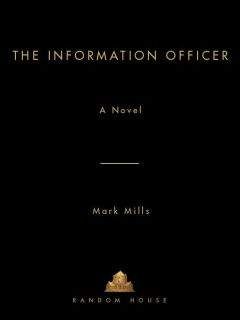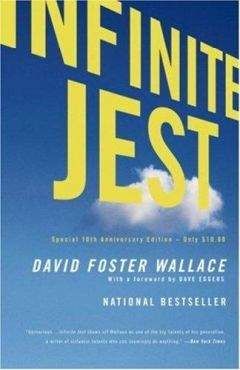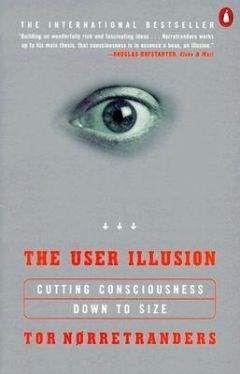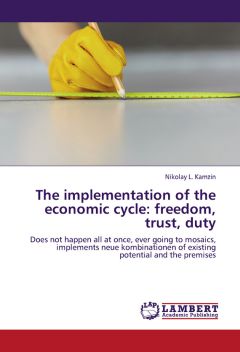Юрий Низовцев - Everything and nothingness
All it means that thinkers of all ages have underestimated the complexity and ambiguity of the next factor: who we – the people – such in truth, as well as in what we are situated.
However, Parmenides tried to prove that beingness is one thing, that there is no motion in it , there is no origination and destruction: “… it is universal, existing alone, immovable and without end; nor ever was it nor will it be, since it now is, all together, one, and continuous” [14, p. 37-39]. Regarding the world in which we are, then he put it so: “It is necessary to say and to think that What Is is; for it is to be,/ but nothing it is not. These things I bid you ponder./ For I shall begin for you from this first way of inquiry,/ then yet again from that along which mortals who know nothing/ wander two-headed: for haplessness in their/ breasts directs wandering understanding. They are borne along/ deaf and blind at once, bedazzled, undiscriminating hordes,/ who have supposed that it is and is not the same/ and not the same; but the path of all these turns back on itself” [14, p. 37-39]. That is, he believes this world is the seeming world of opinions and senses.
It is necessary to tell that Parmenides's idea about beingness as the uniform, the eternal and the motionless, which seems absurd, actually can explain a lot of things in existence, if to assume that the except eternal, infinite Uniform there is not seeming, but quite the material, real world in time which is united indissolubly with the eternal Uniform in a certain sustainable system, both components which support each other.
To assume this, of course, possible, but it would be desirable to receive the answer to a question: how functions this system.
Beingness, if to see under it everything existing, or existing things, can't be manifested in absence of consciousness in any way. In other words, if the consciousness was not, as such, then and beingness there would not be – there would be nothing. This fact is, apparently, the primary cause of the appearance in human consciousness of the concept of God-creator.
The first of philosophers this ratio between consciousness and things quite distinctly, albeit in his own way, understood Berkeley: “IV. It is indeed an Opinion strangely prevailing amongst Men, hat Houses, Mountains, Rivers, and in a word all sensible Objects have an Existence Natural or Real, distinct from their being perceived by the Understanding. But with how great an Assurance and Acquiescence soever this principle may be entertained in the World; yet whoever shall find in his Heart to call it in Question, may, if I mistake not, perceive it to involve a manifest Contradiction. For what are the forementioned Objects but the things we perceive by Sense, and what do we perceive besides our own Ideas or Sensations; and is it not plainly repugnant that any one of these or any Combination of them should exist unperceived?” [9, p. 13].
In this statement of Berkeley traced the idea that without existence of senses and reason is problematic existence of everything else, inasmuch there are no one and nothing to perceive the rest. However, Berkeley out of this draws the conclusion, characteristic for his time: “XXVI. … there is no corporeal or material Substance: it remains therefore that the Cause of Ideas is an incorporeal active Substance or Spirit” [9, p. 19].
Whatever it was, but Berkeley is correct in his assumption that without consciousness the world does not exist, it simply cannot be as beingness: in this case the world is already non-existence, nothingness.
Our own existence means that a contradiction is in the infinite and eternal Uniform, as a result of which it, remaining uniform, infinite and timeless, along with that is discretely in infinite number of finite worlds, acquiring time of existence.
Otherwise, Uniform would have remained in non-existence. This means that infinite and timeless Uniform potentially contains all, including at least aught the passive and aught the active which are able to exist as the projection of Uniform into time, i.e. in finite changes. Question consists only in the mechanism providing this duality: in Uniform potentially there is everything and along with that Uniform is nothingness, inasmuch separately it is non-existence. On the other hand, there is its twin, or a projection in which there is time. In other words, Creation (system of a world order) is the infinite timeless Uniform, and along with that – aught the finite, manifesting itself in time infinitely that we designate as beingness, or existing things in its last embodiment, perceived by us as the real.
The fact that some "mechanism" of manifestation of the world in the form known to us exists one can hardly deny, and most simple its realization is power of God, or power of the spirit.
Such conclusion did Berkeley, who considered possible existence of only the incorporeal, the spiritual.
However the incorporeal is non-being, which must stay in it owing to impossibility of emergence in this "Nothingness" of internal contradictions with their exit "outwards" – in beingness. We observe quite real picture of the world, and the things, which are in it, aren't incorporeal, on the one hand, at this, consciousness, on the other hand, interacting, in particular, with a body, despite own elusiveness, is quite effective and material force which is reflected in the psyche and transformation of sensations into constantly shifting picture of the world.
Husserl, investigating consciousness in its ratio with beingness, despite different fluctuations, ultimately, like Berkeley, acknowledged the possibility of existence of only consciousness even if the whole world will disappear: “Consequently, no real being, no being which is presented and legitimated in consciousness by appearances is necessary to the being of consciousness itself (in the broadest sense, the stream of mental processes)” [10, p. 110].
Avenarius and Mach prove that without consciousness there is no matter, and without matter there is no consciousness so how in experiment distinction between subject and object disappears. On this basis they deny existence out of the person of objective reality.
V. I. Lenin, as a materialist, has put forward against this approach the following objections.
“For every scientist who has not been led astray by professorial philosophy, as well as for every materialist, sensation is indeed the direct connection between consciousness and the external world; it is the transformation of the energy of external excitation into a state of consciousness. This transformation has been, and is, observed by each of us a million times on every hand. The sophism of idealist philosophy consist in the fact that is regards sensation as being not the connection between consciousness and the external world, but a fence, a wall, separated consciousness from the external world – not an image of the external phenomenon corresponding to the sensation, but as the “sole entity.” Avenarius gave but a slightly changed form to this old sophism, which had been already worn threadbare by Bishop Berkley. Since we do not yet know all the conditions of the connection we are constantly observing between sensation and matter organized in a definite way, let us therefore acknowledge the existence of sensation alone – that is the sophism of Avenarius reduces itself to” [1, chapter 1.1]; “The existence of matter does not depend on sensation. Matter is primary. Sensation, thought, consciousness are the supreme product of matter organized in a particular way” [1, chapter 1.2].
In response to this statement of Lenin V. I., we will notice the following.
The person, the lizard, the spider perceive in their own way the same thing and use it accordingly. In some cases, the thing, which is perceived by the person, is unavailable to the worm, not passing through the channels of his sensations, or this thing is felt by the worm completely in a different form and properties. That is, the worm has some own environment, own world anyway and the person isn't able to get into it, and vice versa. In other words, sense organs of various beings form their own environment not from "ready" things, but form it in compliance only with those means which they possess. Therefore the "form" of the thing, which emerges in consciousness of any living being, depends on its sense organs, but not from matter "on the other side" from sensations.
Thus, paramount to the living being in correlation with a thing has process of identification of a thing by means of scanning the surrounding with sense organs as well as existence in individual consciousness though the hidden, but accurately acting form-building abilities, or matrices, which correspond to the capabilities of sense organs of the living being. At this the sense organs on a set and on properties differ significantly for living creatures. For example, birds perceive the magnetic field and they are even able easy to navigate by it, the person does not have this ability. However he was able to understand its nature by expanding the range of their sensations artificially -in this his difference from other living beings, – the person using appropriate instruments, discovered the magnetic field, determined its essence, and then began to use it in own practice.
However no devices cannot penetrate the essence of the "dark matter" and cannot help to the person to reach other measurements of the Universe.
Whatever it was, but the sphere of the surrounding different species of living beings – their own, and this sphere depends on opportunities of their sense organs and to the hidden form-building abilities corresponding to them, which are determined not by individual consciousness in its open expression, but at means of the single consciousness. But for the person the form-building abilities of consciousness partially are discovered also in his ability to revealing by these or those ways of essences of things on the basis of experiment and own intelligence.
Thus, if sense organs and a certain reflective-instinctive mind of the living beings without self-consciousness develops only during evolution, at the person they is supplemented with various instruments of labor, devices, apparatus as well as thinking with elements of analytical and synthetic intellectual actions, imagination, communication language, extensive and databases, replenished all the time, aspirations to new etc., that allows him to create culture, a civilization, to carry out practical incessant process of knowing the world, as well as to improve conditions of own existence; as Heidegger spoke, the person "takes care" of beingness, without forgetting about himself: “The multiplicity of these is indicated by the following examples: having to do with something, producing something, attending to something and looking after it, making use of something, giving something up and letting it go, undertaking, accomplishing, evincing, interrogating, considering, discussing, determining… All these ways of Being-in have concern as their kind of Being – a kind of Being which we have yet to characterize in detail. Leaving undone, neglecting, renouncing, taking a rest – these too are ways of concern; but these are all deficient modes, in which the possibilities of concern are kept to a “bare minimum”. The term “concern” has, in the first instance, its colloquial [vorwissenschaftliche] signification, and can mean to carry out something, to get it done [erledigen], to “straighten it out”. It can also mean to “provide oneself with something”. We use the expression with still another characteristic turn of phrase when we say “I am concerned for the success of the undertaking.” Here “concern” means something like apprehensiveness. In contrast to these colloquial ontical significations, the expression “concern” will be used in the investigation as an ontological term for an existentiale, and will designate the Being of a possible way of Being-in-the world. This term has been chosen not because Dasein happens to be proximally and to a large extent “practical” and economic, but because the Being of Dasein itself is to be made visible as care” [4, p. 83-84].
Thereby awareness by the person of himself gives him opportunity in the course of the practical actions and the subsequent reflection (and vice versa) to find essence, stability of things in their changes, but it happens only on the basis of what the person feels without opportunity to penetrate into the world, which is felt by other living beings, as well as without opportunity to penetrate beyond their own sensations, even expanded with devices, in particular, to get into own hidden consciousness (the subconscious mind), distant worlds, other measurements.
Therefore argument of materialists, including V. I. Lenin, that practice is the only criterion of truth during knowledge of objectively existing things that is everything that exists outside sensations (this ultraboundary Lenin V. I. calls matter) which connect consciousness of the person with the outside world, may not be adequate. This criterion is valid, as we have shown above, only applied to the current life, but not for the entire multifaceted beingness, and, in particular, to prove the presence of things in such form how we perceive them, or lack of things outside sensations is impossible with all certainty.
In this regard, neither materialists, represented by V. I. Lenin in his assertion about the existence of matter as primary and not depending of sensations, nor empirio-critics, represented by Avenarius and Mach, which asserted the primacy and somewhere the uniqueness of sensations, can't apply for the ultimate truth, so how don't represent adequate ratio of beingness, consciousness and information.
However, Avenarius and Mach in his approach to the ratio of sensations and things in some respects moved further Berkeley and Husserl and further the materialists, having presented certain evidence of its concept, in which consciousness becomes attached to things, and vice versa, things do not exist outside consciousness.
At this materialist arguments in the face of Lenin, as you can see, often look unconvincing, though sensation, thought really “… is the supreme product of matter organized in a particular way” [1, chapter 1.2], which Lenin, however, did not give any interpretation.
Lenin was right, that “.... sensation is indeed the direct connection between consciousness and the external world” [1, chapter 1.1]; but in the opposite sense, because the outside world as a holographic projection Uniform is formed directly by the single consciousness; besides, sense organs of each conscious being (the live) are connected with Uniform, on the basis of which the single consciousness is copying every "moment" things for updating of former copies of things from Uniform by means of their identification through sense organs of conscious beings and thanks to understanding by the single consciousness of forms of these things.
Whatever it was, Avenarius and Mach are right in the respect that without consciousness there is no matter and vice versa, though here they exhibit significant fluctuations, then reducing matter to sensations, then claiming that matter as some substance still exists.
In particular, Mach reduces matter to sensations, indicating on this in the following fragment: “Sensations are not “symbols of things”. The “thing” is rather a mental symbol for a complex of sensations of relative stability. Not things (bodies) but colours, sounds, pressures, spaces, times (what we usually call sensations) are the real elements of the world” [15, p. 473].




